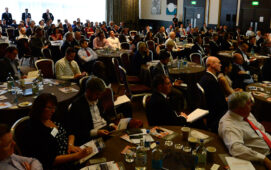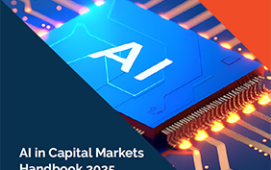
On 19 February 2025, the UK government confirmed that it would adopt a T+1 settlement cycle for securities transactions, following the recommendations of the Accelerated Settlement Taskforce (AST). The transition, set for 11 October 2027, will shorten the time required to settle trades from two days (T+2) to just one (T+1), aligning the UK with global efforts to improve market efficiency and competitiveness. To minimise disruption, the move is being coordinated with the European Union and Switzerland, both of which plan to introduce T+1 on the same date.
The shift represents a major operational and technological challenge for financial market participants. While the Financial Conduct Authority (FCA) and the Bank of England have endorsed the transition, they have also stressed the need for early engagement and industry-wide preparation. The AST will continue to oversee the process, working closely with firms to provide guidance and ensure the necessary technological and infrastructural changes are in place ahead of the deadline.
With the clock now ticking towards implementation, attention is turning to the technology implications of the shift. How prepared are firms for the transition? What systems and processes will need to be upgraded or replaced? And how can automation, AI, and interoperability frameworks help firms meet the new settlement requirements?TradingTech Insight recently sat down with Corinna Mitchell, General Counsel at Symphony, the communication and markets technology company, to discuss these questions.
TTI: Corinna, many financial services firms still rely on outdated technology. How much of a challenge does that pose in a T+1 environment?
CM: It’s a significant challenge. Legacy systems can work for certain use cases, but they introduce inefficiencies, security risks, and interoperability issues. With the move to T+1 settlement, firms that still rely on manual processes – where information has to be re-entered into separate systems – are going to struggle. That kind of inefficiency creates delays and increases the risk of errors. The key to achieving straight-through processing, or at least getting as close as possible, is ensuring seamless data flow between systems.
TTI: With firms losing about 80% of the time they currently have to complete trades, won’t this create serious problems for legacy architectures? Many of these systems were built to process transactions overnight – how will they cope with such a compressed timeframe?
CM: That’s one of the biggest concerns. A lot of financial firms still rely on on-premises technology, which is generally slower – not just in terms of processing but also when it comes to receiving patches and updates. Many firms prefer on-premises hosting for security reasons, but that also means they often update their systems only every six months. That’s not practical when moving to T+1, where speed and flexibility are essential.
The UK Accelerated Settlement Taskforce has recommended that firms begin testing for T+1 in January 2027, which is less than two years away. For firms operating on slow update cycles, that doesn’t leave much time to modernise their systems, ensure interoperability, and confirm they will function seamlessly in a T+1 world.
TTI: The post-trade environment is highly fragmented, with numerous systems across confirmations, allocations, affirmations, clearing, and settlement. These aren’t just the firms’ own systems – how do you see the challenge of integrating with clearing houses, central counterparties, and other third parties? Does the complexity of this network make industry-wide acceleration difficult?
CM: Integration is definitely a major hurdle. The Taskforce has recommended standardising settlement instructions (SSIs) across the industry, ensuring that firms follow a single set of defined, non-deviating instructions. This would remove a lot of inefficiencies.
There are also existing interoperability frameworks like FDC3 that can help, but adoption is key. It’s not enough to have a standard – firms need to commit to implementing it within their systems.
TTI: Is FDC3 really suited for post-trade workflows? So far, hasn’t its use primarily been in front-office applications – helping desktop systems interoperate rather than fixing the post-trade plumbing?
CM: That’s true, but FDC3 could be expanded beyond its current front-office applications. At Symphony, for example, we integrate secure messaging into existing workflows, making sure communication happens in a single, secure environment rather than being siloed across different platforms.
More broadly, structured, standardised formats for data exchange are critical. The technology for interoperability is available, but firms need to be willing to use it. APIs are another key enabler – they allow secure data exchange between systems and help bridge the gaps between legacy infrastructure.
The challenge isn’t necessarily fragmentation – it’s that fragmented systems don’t talk to each other. If every system had a common way of connecting, exchanging data, and understanding messages, fragmentation itself would be less of an issue.
Of course, some functions, like clearing, have to be centralised, but for other processes, having multiple systems can be beneficial. Firms get more choice, and there’s added resilience – if one system goes down, another can pick up the slack.
The problem arises when these systems don’t communicate effectively. If firms are using different platforms but those platforms can interoperate seamlessly, fragmentation doesn’t have to be a barrier.
Differentiation and interoperability aren’t mutually exclusive. Vendors can still offer unique functionality while ensuring that their systems adhere to industry standards for data exchange.
That’s why the Taskforce has strongly emphasised automation. If firms automate key processes and ensure that systems can communicate effectively, they can maintain their competitive edge without creating unnecessary barriers to interoperability.
TTI: How do you see AI playing a role in helping firms prepare for T+1?
CM: AI is particularly useful for monitoring and detecting patterns in real-time. If firms have structured signals, tags, and automation in place, AI can flag issues and escalate them for resolution much faster than a human could.
For example, if certain counterparties are consistently late in settling trades, AI can detect that pattern and raise an alert before it becomes a systemic problem. It can also help firms optimise workflows by identifying recurring inefficiencies and suggesting process improvements.
AI can help firms detect and resolve settlement issues faster. And by learning from past patterns, it can help prevent problems before they arise, by analysing vast amounts of post-trade data in real-time, spotting anomalies and risks before they escalate. It’s a way to remove a lot of the manual intervention that slows firms down today.
TTI: Rather than replacing legacy systems entirely, do you foresee that most firms take a more incremental approach – augmenting existing infrastructure with APIs and interoperability frameworks?
CM: That’s certainly the more practical approach. There’s already a lot of good technology out there that can help with this transition. Taskize, for example, is a strong platform for managing trade exceptions. Rather than building new solutions from scratch, firms can integrate with existing tools that are proven to work.
Given how risk-averse financial institutions are, it’s unlikely that many firms will completely replace their legacy systems. A more feasible strategy is to enhance connectivity, gradually replace outdated components, and make better use of interoperability solutions.
TTI: The US and Canada have already implemented T+1 – what lessons can the UK and Europe take from their experience?
CM: One of the biggest lessons is that in the short term, many firms in the US and Canada just threw more people at the problem to meet deadlines rather than implementing long-term automation solutions. That’s something the Taskforce has warned against – firms need to prioritise sustainable automation rather than relying on manual workarounds.
There were also some unexpected downstream effects. Faster equity settlement has implications for derivatives, mutual funds, ETFs, and other related markets. The Taskforce has identified these risks, and firms need to be proactive in addressing them before implementation.
TTI: And what about unintended consequences? Are there downstream effects that weren’t fully anticipated in the US and Canada that we should be thinking about now?
CM: Yes, especially when it comes to derivatives and mutual fund settlements. When the underlying asset settles faster, it changes the timing of related transactions. Firms in the UK and Europe will need to carefully assess how T+1 impacts interconnected markets.
TTI: So, big picture – what’s your final take on T+1?
CM: Moving to T+1 is a major step forward for efficiency and competitiveness. Yes, firms will need to invest in technology, but the long-term benefits far outweigh the costs. The solutions to make this work already exist – what’s needed now is industry-wide commitment to implementing them.
Subscribe to our newsletter




